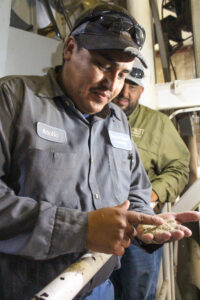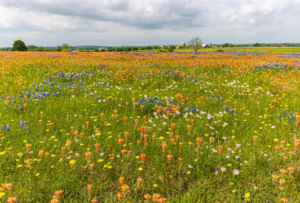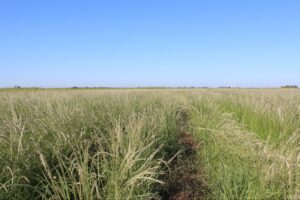Big bluestem — a member of the “big four” grasses of the Tallgrass Prairie — is in demand by range managers because it is not seen as much in rangelands as it once was. When Big Bluestem—Latin name Andropogon gerardii—takes hold on rangeland, you can rest assured the ecosystem is effectively managed.
Why is this the case?
- Big bluestem possesses the capability to come on strong, but only with help from fellow grasses.
- It can thrive, but only through the use of proper stocking rates and growing season rest.
Big Bluestem relies on the biology of other grasses within the ecosystem to establish. Rangeland managers must plan carefully and keep a watchful eye out for overgrazing. Big Bluestem should not be grazed shorter than 6 to 8 inches, so the health and vigor of the stand can be maintained. Improper rangeland management has resulted in Big Bluestem not being as abundant as it once was.
Even so, Big Bluestem remains a common prairie grass found across the plains of Oklahoma and Texas. It is also the state grass of Illinois and Missouri. Growing to a mature height up to 6 feet tall, its leaves are rough to the touch. The shape and color of the seed mimics a turkey foot. It’s the distinct bluish to blush-green hue during the growing season that lends the color to its proper name. In the dormant season, Big Bluestem will take on a reddish-orange tinge.
Big Bluestem provides nesting cover for ground-nesting birds and good fawning cover for deer. Deep roots allow it to stabilize stream banks. The grass plays an important role as a component for healthy rangeland in many upland states.
Bamert offers Kaw and Earl varieties of Big Bluestem. Our experts are ready to help you find which variety fits your region best. As always, Bamert works to help you succeed in your goals for specific locations.



